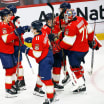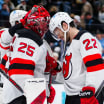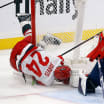Whatever reasons are responsible for Crosby's scoring slump under his former coach have been corrected under Sullivan. In 105 games under Johnston dating back to the start of the 2014-15 season, Crosby averaged 2.3 points per 60 minutes at even strength, a far cry from the dominant scoring rates of 3.1 and 3.5 he achieved under former coaches Michel Therrien and Dan Bylsma, respectively.
In 38 games with Sullivan, Crosby's scoring rate is right back to those previously established heights, with 3.45 even-strength points per 60 minutes.
Even Crosby's shot-based puck possession numbers, which dropped from a Relative SAT of 5.6 percent under Bylsma to 2.8 under Johnston, have climbed back up to 5.2 under Sullivan. Relative SAT is the percentage of shot attempts taken by the Penguins when Crosby is on the ice, relative to the rest of the team.
What happened to Crosby early this season? A temporary scoring slump can be caused by a variety of different factors, such as weaker linemates, tougher matchups, a more defensive-focused assignment, injuries and just plain bad luck. None of those factors fully explain Crosby's slow start, nor his subsequent turnaround.
The underlying numbers show Crosby had largely the same caliber of linemates and opponents when Johnston was coach, and he was assigned more opportunities in the offensive zone, not less.
Specifically, 56.4 percent of the faceoffs outside the neutral zone Crosby took in his 105 games under Johnston were in the offensive zone. By comparison, his zone start percentage was 49.9 percent under Bylsma, and is 53.9 percent under Sullivan. If anything, his scoring rate should have been higher under Johnston, not lower.



















